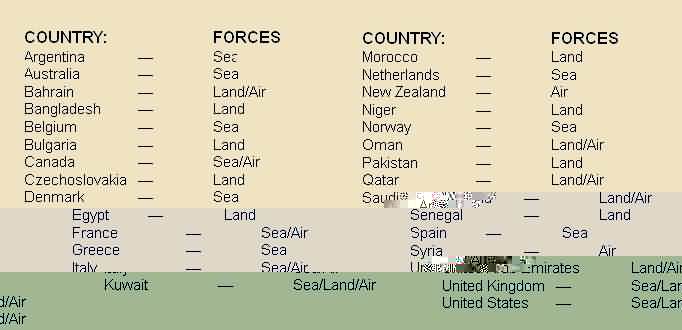![]() Home | Back to TWR Index | Email | The Editor | History | Gulf War
Index
Home | Back to TWR Index | Email | The Editor | History | Gulf War
Index

By now the West has seen first hand what even Hollywood's most ghoulish screenwriters wouldn't dare package for the theatre.
Many were shocked when a six-year-old British boy was used in a propaganda broadcast by Saddam last fall. A worried world watched as Saddam took civilian hostages and held them as human shields at potential military targets.
No one believed at first when our reporters in the Middle East gave us stories of atrocities in Kuwait City. They told of the lives of infants and young children brutally taken by marauding Iraqi soldiers. Gradually it sunk in and the popular press began to carry the same stories. Today Saddam has depopulated two thirds of Kuwait's indigenous peoples. "Hitler revisited" is how a shocked George Bush described him.
Then came Saddam's threats to gas the Israeli population. Iraqi foreign minister Tariq Aziz, as if stating a ho-hum matter of fact told reporters in Geneva on January 9 of Saddam's determination to gas Israel. That was dismissed as outrageous rhetoric by western populations and the general media until the first volley of al-Hussein missiles exploded in Tel Aviv last week.
Nine battered and psychologically broken pilots, the first Prisoners of War taken by Iraq lost their dignity on Monday before hundreds of millions of television viewers. They along with future PoWs — we think the worst is yet to come — will be used as human shields at Iraq's military targets.
And the West's `reasonable' response:
"We can take Saddam to court."
Right. Let's be decent about all this. Yes, we must abide by our own standards and do so with a cool resolve. And yes, we are bound by our own rules of fair play. But Saddam must be boldly told that as sure as British and American pilots will learn of their mates' torture, Saddam's ass will never make it to any court. Fair is fair. Micheal John O'Brien
Volume 5, Number 4 January 23, 1991
Comment:
BOUND TO FAIR PLAY
In five years of our Monday midnight shifts, none before brought such anguish. More than fourteen times through the night we heard the broken voices of PoWs held by Saddam Hussein. There was blatant evidence of torture and defiled human dignity. The 14" television monitor and the short wave radio; the familiar droning office fixtures became the heads of an old, haunting, compassionless demon.
Through the hell years of the bloody Viet Nam War, between 1961 and 1973, the U.S. struggled with the concept of fighting fire with fire: playing dirty in the same manner as did the enemy. Inability to return the fire of horror rained upon its own troops finally cost America the war.
Principles of honour, justice, and the right of law are impairments when battles are fought against peoples of extremist cultures with values opposite to the West's code of conduct.
For us at The Wednesday Report, the
first suggestion of future horror came during the Iran/Iraq war
("The Emerging Threat"). As Saddam pursued development of the
ugliest weapons of mass destruction it became clear that future
wars in the Mideast would have appalling dimensions.
Iranians against whom Saddam's atrocities were unleashed
concurred, but their message went unheeded. The Israelis tried to
get a message across to us in 1981 when Menachem Begin first
stabbed the devil's effort to build a nuclear bomb.
-
Publisher and Editor In Chief: Micheal J. O'Brien
-
Circulation Manager: Julie K. Kwiecinski
-
Editorial Staff Writer:
-
Frederick J. Harris
-
Contributing Editors:
-
Dale Grant (Toronto)
-
Patrick McManus (Halifax)
-
William Kane (Washington DC)
-
John Reed (London, England)
-
Moshe Karem (Jerusalem, Israel)
-
The Wednesday Report is published weekly by
-
MPRM Group Limited, 27 Yonge Street South, Aurora, Ontario, Canada L4G 1L8. Telephone: (416) 841-1277 Facsimile/Data: (416) 841-4389.
-
Subscription Rates: first class mail delivery $500 yearly, express delivery $650 yearly, single copy $15.
-
ISSN 0835-6122
-
Copyright: ©MPRM Group Limited 1991.
-
All rights reserved. Reproduction in part or in whole,
-
in any manner whatsoever, is strictly forbidden.
